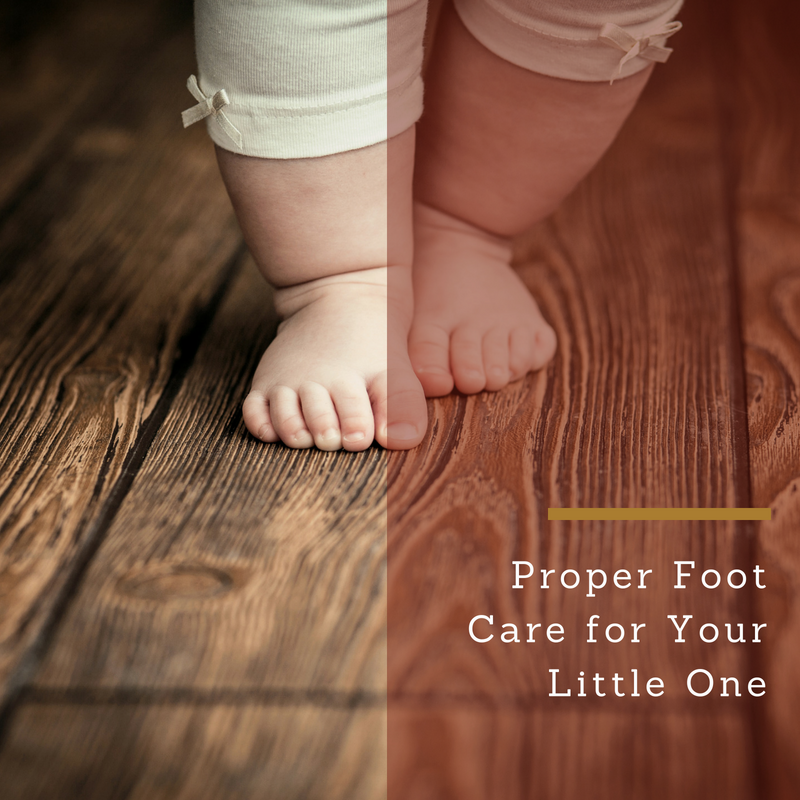Why Children’s Foot Care is Important
We don’t really want to compare your beloved child to a car, but… well, here we go!
Cars have a great smell when new. So do babies!
You change the oil of one; the diapers of the other.
You get very protective against dings and dents for either.
But most importantly, for purposes of our discussion, it’s wisest to consider the long-term care of both.
When it comes to foot and ankle problems, it’s easy to think about them happening only later in life. Children shouldn’t have much to worry about, right? They’ve still got low mileage and little wear and tear!
 You might be surprised, though. Children can suffer many of the same general conditions as adults. Warts are an obvious one, but don’t forget ingrown toenails and even fungal infections.
You might be surprised, though. Children can suffer many of the same general conditions as adults. Warts are an obvious one, but don’t forget ingrown toenails and even fungal infections.
But in addition to these problems, there are also conditions that are more specific to children and growing up. You might start seeing these as your child develops and starts to become more mobile.
In all of these cases, there is one thing we want to stress: Monitoring and taking care of your children’s feet now will give them much better odds of entering adulthood without chronic or painful problems.
For a clearer picture of why, let’s delve deeper into some of these developmental conditions and why keeping an eye on them is important.
Conditions to Watch for As Your Child Starts Walking
Watching your child walk for the first time is a moment of great pride for any parent. And then it can get a little weird.
As your child gains strength and coordination, you might see them begin to exhibit abnormal gaits or stances. For example:
- Flexible Flatfoot – Your child’s arch disappears when they stand, but comes back whenever they sit or rise onto their toes.
- Toe Walking – Your child spends a lot of time walking only on tiptoes.
- In-toeing – Your child walks with their toes slanted in toward each other.
- Out-toeing – Your child walks with their toes slanted outward, away from each other.
Behaviors such as this are very well worth observing when they happen, and very much worth keeping track of.
The good news in these cases is that most of them will resolve entirely on their own.
Let’s take flexible flatfoot, for example. This is often simply a matter of your child’s arches not being fully formed yet. The arch does not tend to begin fully developing until age 5 or older, so there could be some time where you may witness this tendency in your child.
Even in some cases when a child does not develop an arch, things are still all right. They end up able to walk, run, and play sports just fine without any problems or pain.
That said, these conditions are worth monitoring because there are times when they don’t end up all right.
Flatfoot can sometimes be rigid, in which you don’t see the arch return while sitting. This can be caused by abnormalities in the joints of the back of the foot. And in other cases, the failure of an arch to develop can lead to pain.
In these cases, you need a foot and ankle expert to address the problem and provide proper treatment. Even better, though, is having that expert detect and start to treat the problem before it becomes something troublesome in the first place!
Toe walking, in-toeing, and out-toeing are similar situations. When you first see them, they are likely not something you need to worry about too greatly. But to be on the safe side, it’s best to professionally check up on these conditions as your child grows to ensure they are improving and not running a higher risk of turning into something problematic.

Earlier is Always Better for Children’s Foot Care
So let’s go back to the car analogy.
If your windshield wipers are broken, or your spark plugs are busted, you go and get things taken care of. That’s like ingrown toenails, warts, etc. The obvious problems.
Flexible flatfoot, in-toeing, out-toeing, and the like? That’s more like the check engine light coming on.
Sometimes that light is just some odd emissions trigger going off. If there’s nothing obviously wrong, you might be able to coast by and be just fine.
But what’s really the wiser move here: getting that light checked out, or praying it doesn’t turn into a big deal?
When it comes to your children, we’d always rather take preventative measures when possible than come into the picture after something starts to become painful and chronic. It provides a much better experience for the young ones and greater peace of mind for the parents.
So whenever your child has picked up a stubborn skin or nail condition (as they’re prone to do), or have suffered an injury of the foot or ankle, don’t hesitate to give us a call!
And if you see something you think might be odd about the way your child walks, but you’re not sure it’s something you need to be concerned about? Give us a call then, too. We’d rather know that something is not a big deal than not know trouble is brewing.
Contact Capital District Podiatry at (518) 273-0053 or fill out our online form to get a hold of us. We’ll be happy to address your concerns.
Troy Office
763 Hoosick Rd.
Troy, NY 12180
Clifton Park Office
855 Route 146 | Suite 150
Clifton Park, NY 12065
© Capital District Podiatry, LLC. All Rights Reserved.
Notice of Nondiscrimination | Privacy Policy | Terms & Conditions
